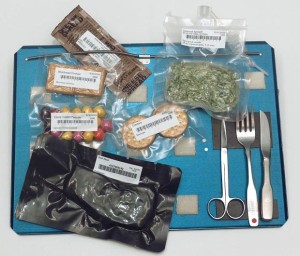For those in need of a history lesson, a brief on the development of HACCP.
 NASA’s Hazard Analysis and Critical Control Point (HACCP) system created decades ago for the lunar landing initiative is credited to this day with reducing foodborne illnesses.
NASA’s Hazard Analysis and Critical Control Point (HACCP) system created decades ago for the lunar landing initiative is credited to this day with reducing foodborne illnesses.
Originally developed for astronaut food in the early days of the Apollo program – because no one wanted diarrhea in a space suit or barf in a space helmet — the HACCP system has been adopted by major players in the food industry
Sixty years ago, at what is now Johnson Space Center in Houston, a nutritionist and a Pillsbury microbiologist partnered with NASA to provide uncontaminated food for the astronauts on the Gemini and Apollo missions.
Instead of testing end products, Paul Lachance and Howard Bauman came up with a method that identified and controlled potential points of failure in the food production process.
To make astronaut food safe, the duo introduced hazards in the production line, observed the hazard and determined how it could be prevented.
In 1971, the deaths of two people from botulism, a severe foodborne illness caused by bacteria, prompted the National Canners Association to adopt stricter standards. The Food and Drug Administration and the canners association implemented the HACCP regulations for low-acid canned food.
In 1993, an outbreak of food poisoning at a fast-food chain prompted meat and poultry manufacturers to adopt to the HACCP regulations as part of an effort to restore public confidence in the industry. A decade after that, the FDA and the Department of Agriculture made HACCP regulations universal for meat, poultry, seafood and juice producers.
Standardization was further strengthened in 2011 when the FDA Food Safety Modernization Act came into existence. While HACCP applies to all U.S. food producers, all applications are unique to particular foodstuffs.


